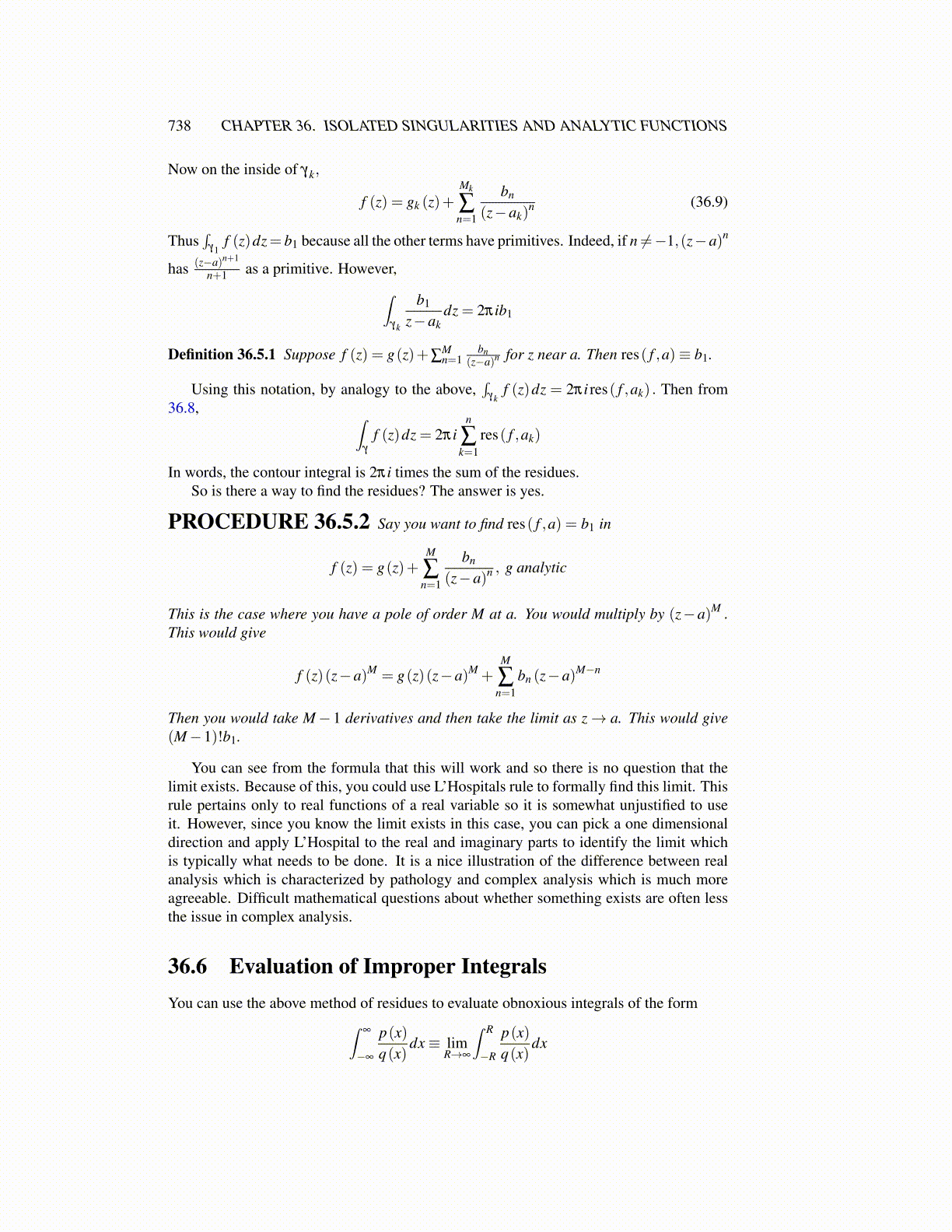
738 CHAPTER 36. ISOLATED SINGULARITIES AND ANALYTIC FUNCTIONS
Now on the inside of γk,
f (z) = gk (z)+Mk
∑n=1
bn
(z−ak)n (36.9)
Thus∫
γ1f (z)dz= b1 because all the other terms have primitives. Indeed, if n ̸=−1,(z−a)n
has (z−a)n+1
n+1 as a primitive. However,∫γk
b1
z−akdz = 2πib1
Definition 36.5.1 Suppose f (z) = g(z)+∑Mn=1
bn(z−a)n for z near a. Then res( f ,a)≡ b1.
Using this notation, by analogy to the above,∫
γkf (z)dz = 2πi res( f ,ak) . Then from
36.8, ∫γ
f (z)dz = 2πin
∑k=1
res( f ,ak)
In words, the contour integral is 2πi times the sum of the residues.So is there a way to find the residues? The answer is yes.
PROCEDURE 36.5.2 Say you want to find res( f ,a) = b1 in
f (z) = g(z)+M
∑n=1
bn
(z−a)n , g analytic
This is the case where you have a pole of order M at a. You would multiply by (z−a)M .This would give
f (z)(z−a)M = g(z)(z−a)M +M
∑n=1
bn (z−a)M−n
Then you would take M− 1 derivatives and then take the limit as z→ a. This would give(M−1)!b1.
You can see from the formula that this will work and so there is no question that thelimit exists. Because of this, you could use L’Hospitals rule to formally find this limit. Thisrule pertains only to real functions of a real variable so it is somewhat unjustified to useit. However, since you know the limit exists in this case, you can pick a one dimensionaldirection and apply L’Hospital to the real and imaginary parts to identify the limit whichis typically what needs to be done. It is a nice illustration of the difference between realanalysis which is characterized by pathology and complex analysis which is much moreagreeable. Difficult mathematical questions about whether something exists are often lessthe issue in complex analysis.
36.6 Evaluation of Improper IntegralsYou can use the above method of residues to evaluate obnoxious integrals of the form∫
∞
−∞
p(x)q(x)
dx≡ limR→∞
∫ R
−R
p(x)q(x)
dx